Is This Van Gogh’s One True Love? Sketches of Sien
Vincent van Gogh produced dozens of sketches of his live-in lover Clasina Maria Hoornick, known as Sien. Let's take a look!
Candy Bedworth 31 July 2025
Every country has its legends and fairytales, and Portugal is no exception. One of the most well-known Portuguese tales is a love story about King Pedro of Portugal and Inês de Castro. Their relationship did not end as they would have wanted, with Inês being killed by royal minions, but in this case, what life took apart, death put back together. Here is the story of how King Pedro’s and Inês’ tombs were made.

It all started in the 14th century when Prince Pedro (1320–1367), who was at the time the rightful heir to the throne, met Constança from the Castela Kingdom, whom he was expected to marry in an arranged marriage. Pedro, however, fell in love with one of Constança’s maids; her name was Inês de Castro (1320 or 1325–1355) and she reciprocated the prince’s love.
Pedro and Inês had a secret affair which became public as soon as Queen Constança died giving birth to Pedro’s child. Her death made Pedro feel comfortable enough to make his relationship official, but his father, King Afonso IV, was having none of it and forbade them to marry. Nevertheless, Pedro and Inês decided to live together in Coimbra, Portugal, and have children.
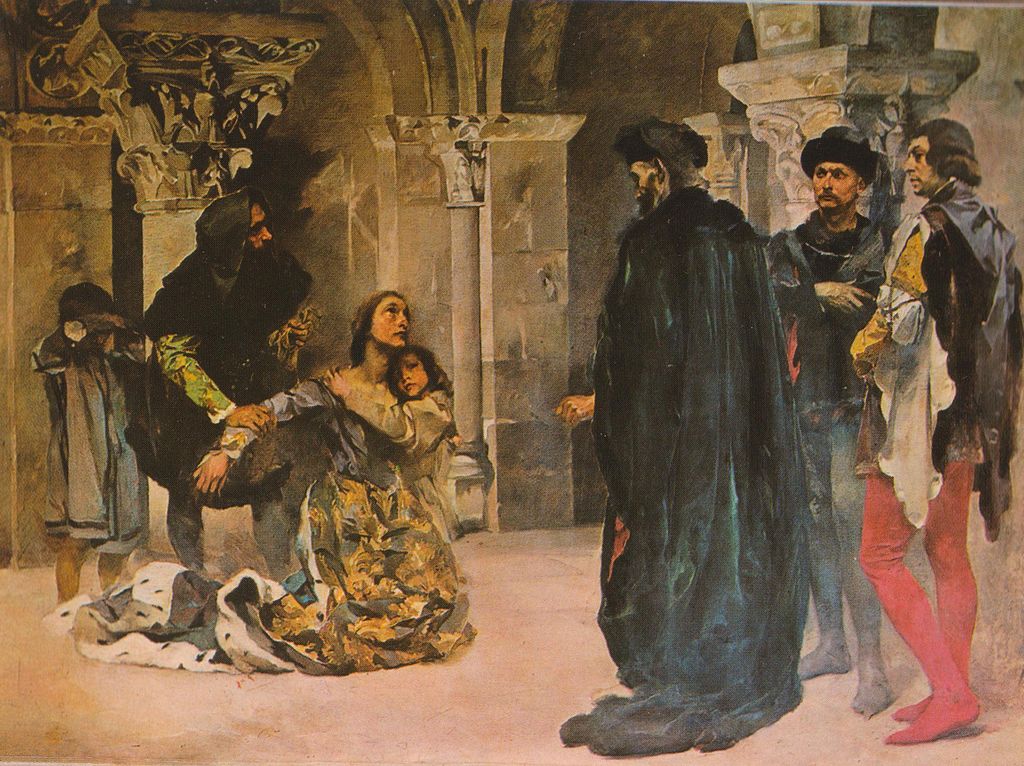
Legend has it that Inês’ brothers had a significant influence on Pedro, which started to bother the royal family. In addition, because Pedro and Inês supposedly married, their children were heirs to the throne. Soon King Afonso IV decided that it was time to kill Inês de Castro, so he gathered a group of men and demanded that they kill her.
The legend says she was killed at Quinta das Lágrimas in Coimbra and you can visit the fountain where one can still see her blood on the rocks. In fact, she was killed at Paços de Santa Clara, also in Coimbra.
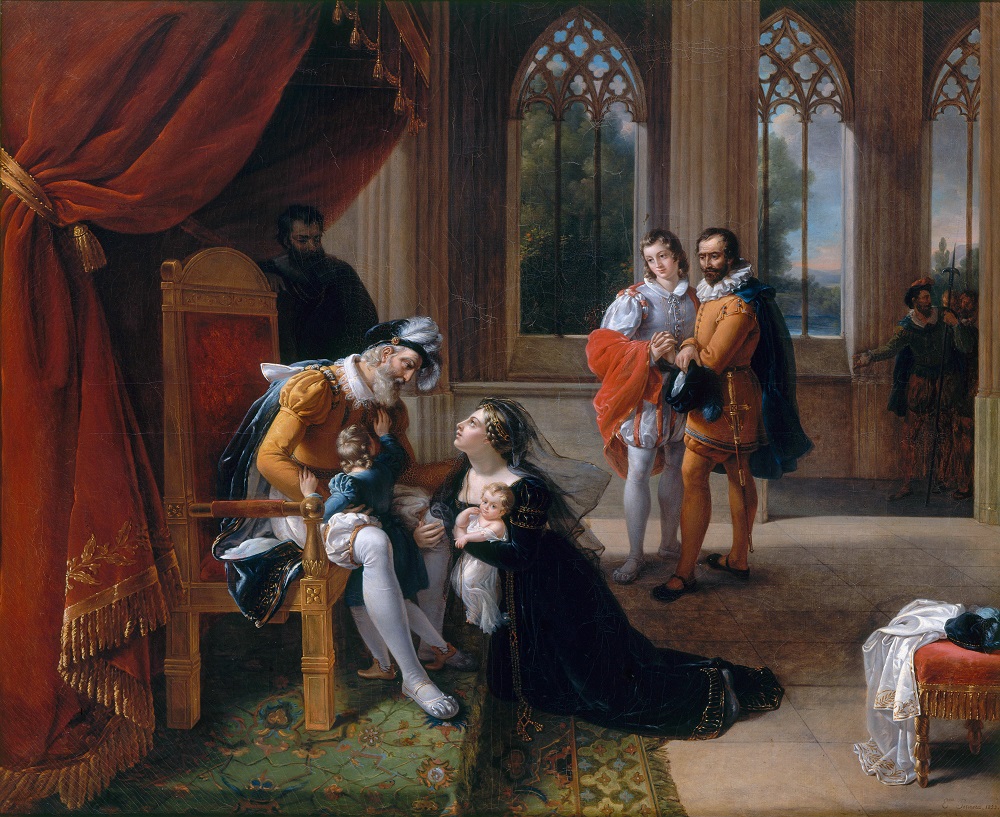
Pedro became furious and wanted to start a war with his father, but his mother, Queen Beatriz, appealed for peace and made her son give up on this idea. At the time, Pedro also swore not to hunt down the men who killed the love of his life, but immediately after his father’s death, he changed his mind and demanded they were killed. This action gave him the alias Cruel.
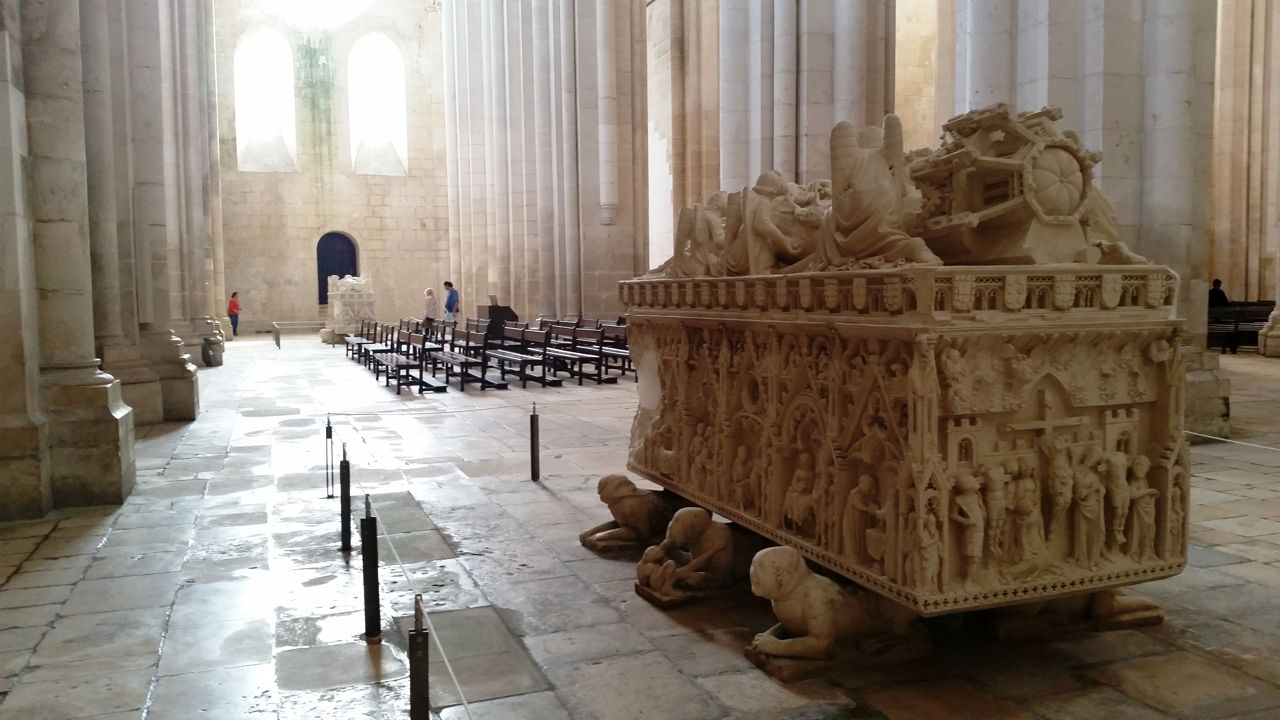
King Pedro and Inês were reunited after their death. After Inês died, Pedro crowned her as queen making her the first and only Portuguese queen crowned after her death. King Pedro made sure this royal title was visible on her tomb and then ordered that his tomb be next to hers, so they could stay side by side for eternity.
The tombs were constructed between 1358 and 1367 and although it is unknown who built the tombs, many believe he was Portuguese, with some French influences. The tombs are located at Alcobaça Monastery, as King Pedro wanted. At first, they were located in the south transept of the church but were then moved to the tomb room. In the 20th century, they were moved back to their original place, situated opposite each other rather than side by side. Inês is in the north arm and Pedro in the south one.
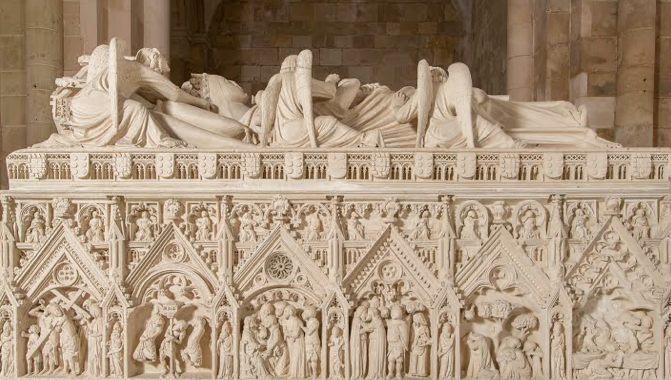
The tombs are made of limestone from Coimbra and were executed in Gothic style. They present the lying statues of King Pedro and Inês de Castro, both crowned. Surrounding the statues in each tomb are six angels, who are taking care of the creases of the royal cloaks and raising the heads of the dead a bit higher up as if to make their sleep more comfortable.
Inês de Castro’s statue has a serene face. She holds a glove in her left hand and touches her necklace with her right. The tomb is supported by six hybrid beings that have human faces and animal bodies.
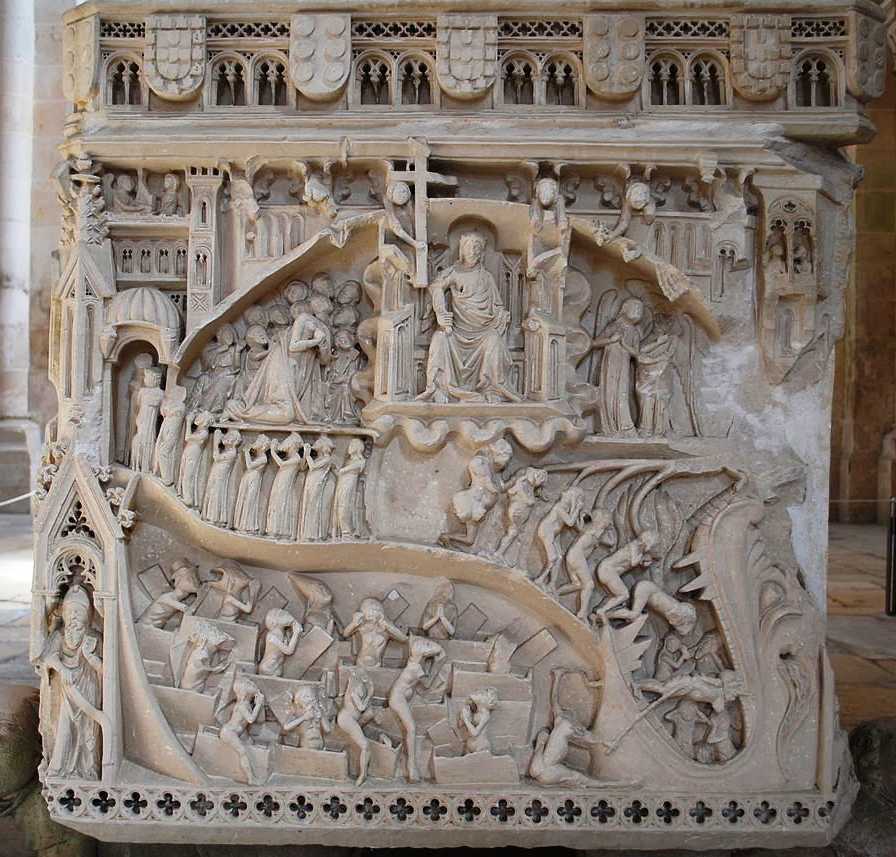
On the sarcophagus, we can see scenes of Christ’s life: the sides show Christ’s childhood, and the head and feet show Christ’s Calvary and the Final Judgment. There is a belief that with this last scene, King Pedro wanted to show that he and Inês de Castro had a place in heaven, unlike the people who did them wrong, like his father and her killers. On the bottom left, we can see the dead who resurrect and leave their graves. God is at the top center watching over everything.
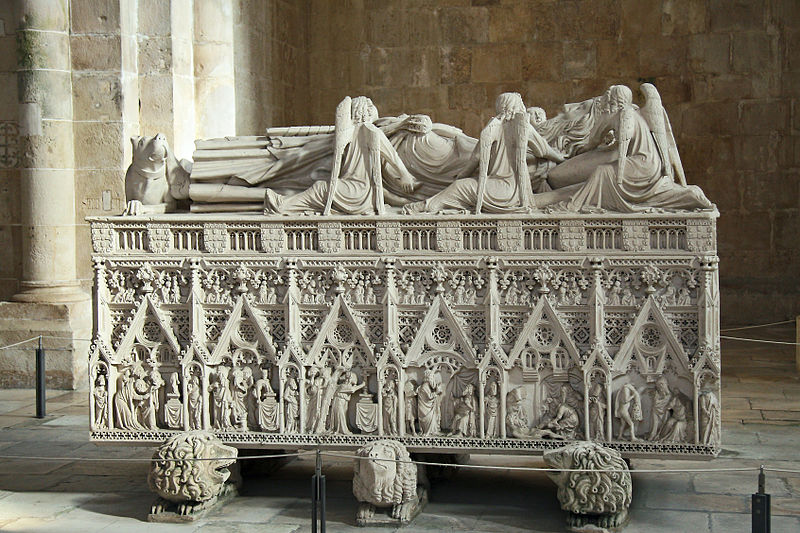
King Pedro’s tomb is considered to be more detailed because its low reliefs are 15 centimeters deep while Inês’s are only 10 centimeters. Pedro’s lying statue has its eyes open and he holds his sword with both hands. At his feet, we can see a dog, a symbol of loyalty, and the sarcophagus is supported by six lions.
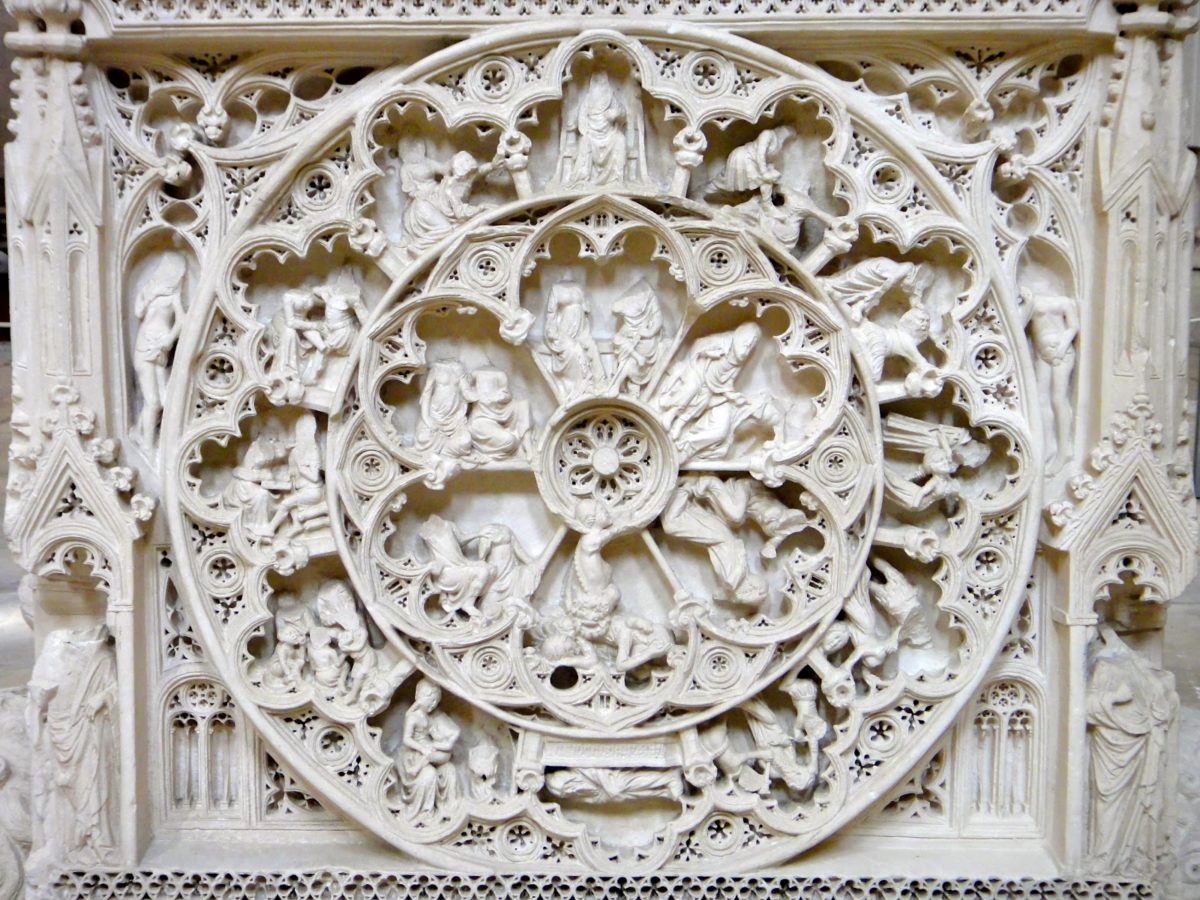
On the head side of his tomb, we can see three concentric wheels. The bigger one, called the Wheel of Life, has twelve petals and shows episodes from Pedro and Inês’s life together; the second one, the Wheel of Fortune, has only six petals and its images are interpreted to symbolize purity of love between them and the immortality and resurrection they will eventually achieve.
The Wheel of Life shows the following moments, (upward direction from left to right):
The Wheel of Fortune shows the following moments, (upward direction from left to right):
The foot of the tomb is all about death, while the lateral sides show elements of Saint Bartholomew’s life. He was known as the patron of stutterers, a characteristic for which King Pedro was also known.
The figurative elements of the tombs are overlapped with architectural ones: gothic facades, pointed archivolts, pinnacles, lintels and trumeau, just as if we were looking into a cathedral’s interior, while the wheels on King Pedro’s tomb can be compared to a rose window. Gothic style was not popular in Portugal because the Romanesque period lasted a lot longer there than in the rest of Europe, but there are a few monumental constructions and a lot of funerary works, of which the tombs of King Pedro and Inês de Castro are the best-known examples. The tombs, however, have been subjected to some damage in the past because many people, including other Portuguese kings, were interested in seeing the remains of King Pedro and Queen Inês.
DailyArt Magazine needs your support. Every contribution, however big or small, is very valuable for our future. Thanks to it, we will be able to sustain and grow the Magazine. Thank you for your help!